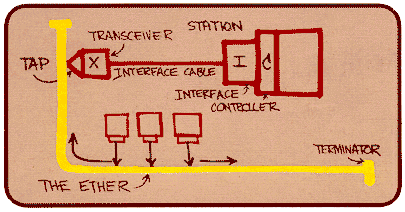

›› Rugged Ethernet and Timing Solutions



In late 1972, Metcalfe and his Xerox PARC colleagues developed the first experimental Ethernet system to interconnect the Xerox Alto, a personal workstation with a graphical user interface. The experimental Ethernet network was used to link Altos to each other, and to servers and laser printers.
The signal clock for the experimental Ethernet interface was derived from the Alto’s system clock, which resulted in a data transmission rate on the experimental Ethernet of 2.94 Mbps. Robert Metcalfe’s first experimental network was called the Alto Aloha Network.
In 1973, Robert Metcalfe changed the name to “Ethernet,” to make it clear that the system could support any type of computer; not just the Xerox Altos and to point out that his new network mechanisms had evolved well beyond the Aloha system. He chose to base the name on the word “ether” as a way of describing an essential feature of the system: the physical medium (i.e., a cable) carries bits to all stations, much the same way that the old “luminiferous ether” was once thought to propagate electromagnetic waves through space. Thus, Ethernet was born.”

“This diagram was drawn by Dr. Robert M. Metcalfe in 1976 to present Ethernet … to the National Computer Conference in June of that year. On the drawing are the original terms for describing Ethernet. Since then other terms have come into usage among Ethernet enthusiasts.”
The evolvement of Ethernet since the seventies has been enormous, both in terms of technology steps (10Mbps -> 100Mbps –> 1Gbps --> 10GbE ..) and in usage.
